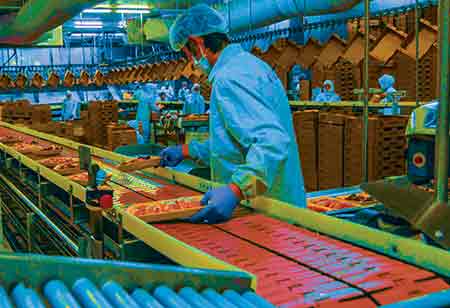Thank you for Subscribing to Food Business Review Weekly Brief
Making Food Trackability Simpler In The Supply Chain Through Technology

By
Food Business Review | Sunday, February 06, 2022
Stay ahead of the industry with exclusive feature stories on the top companies, expert insights and the latest news delivered straight to your inbox. Subscribe today.

Food traceability has gained extensive attention from producers and consumers recently. Tracing food in the supply chain makes it simpler for manufacturers and producers to fulfill FSMA food safety rules and prepare for potential crises like foodborne diseases.
FREMONT, CA: As the food supply chain is complicated, it is hard to track products in real-time. For perishable food products needing constant temperature monitoring, traceability support ensures that temperature controls are performed as required and that products are not in an uncontrolled environment. Food traceability technology is now shifting to a data-driven approach to closely tracking products.
Some of the most general technologies employed in the food supply chain are:
Barcodes: Barcodes were initiated by supermarkets in the early 1970s and remain the most widely used track-and-trace technology in the food industry. The Universal Product Code (UPC) stickers on each food package, read by machines and scanners, include information like the manufacturer and product codes, verified at different stages across the supply chain.
Warehouse Management Systems (WMS): Warehouse management software operates as a storage site for data gathered through RFID tags or barcodes that anyone who requires to reference or monitor can access. Tracked shipment data stored in WMS is critical over a product recall.
Radio Frequency Identification (RFID) devices: To trace data across different inventory systems, small RFID chips are long employed. RFID tags attached to product packages gather radio frequency signals from an RFID scanner. The RFID tags return calls to the RFID scanner, which decodes the encrypted data. RFID devices are utilized to scan products entering and exiting a warehouse automatically.
Internet of Things (IoT): IoT is progressively used to give real-time supply chain data involving food data. Digital tags, sensors, and other data integration tools and equipment can support identifying and tracking food products through artificial intelligence (AI).
Blockchain-based applications: Blockchain technology tracks food to travel from farm to table to improve transparency, speed recalls, and avoid food fraud. For example, blockchain-based traceability could allow consumers to scan a QR code displayed on a food product label and find information regarding the product and its producers, processors, and journey back to the farm that grew it.
Food-sensing technologies: Image analysis and hyperspectral imaging, such as biosensing, can evaluate a food product to classify its components or potential contamination risks.






